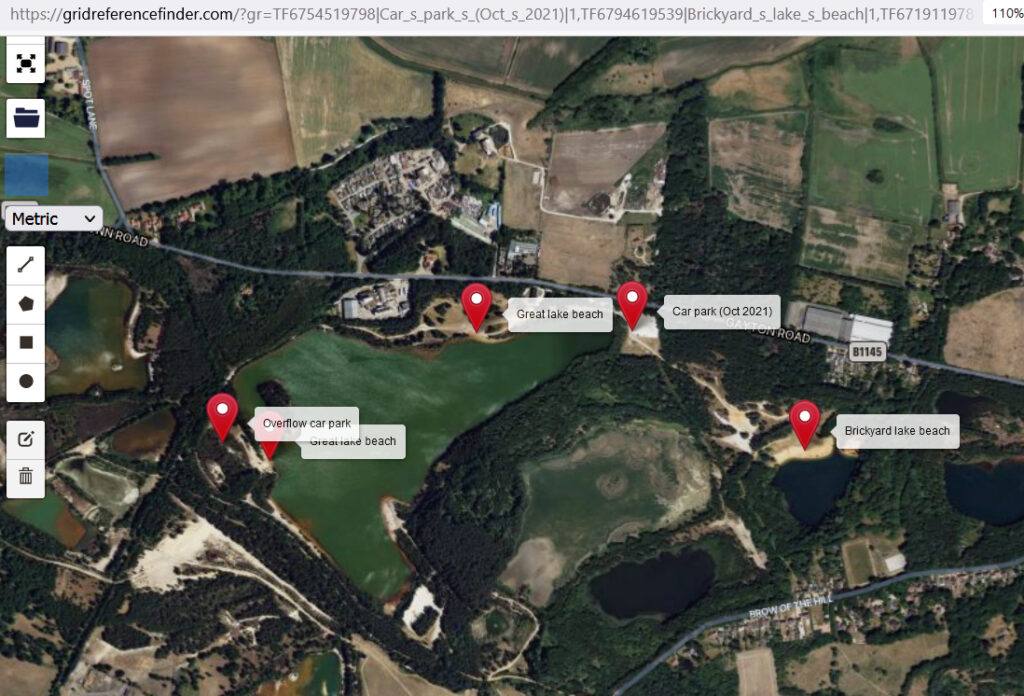Please note: all swims or paddles are at our own risk. Including a location does not indicate that it is recommended or that it is safe; each must do their own risk assessment each time they swim or travel to a location. I accept no liability for the choices that people make. There is Swim Safety info on this website, and on Outdoor Swimming Society website, Survive section. Please follow the Outdoor Swimmers Code.
| County | Norfolk |
| Water body | Ex sand quarry pits/lakes |
| Swim location name | Bawsey Pits, Car park location info, Gayton Road, Bawsey, Leziate |
| Grid reference | TF675197 |
| Latitude | 52.749826858592556 |
| Longitude | 0.4809267749479722 |
| Nearest postcode | PE32 1EP |
| What3Words | stall.pots.dolls |
| Brickyard Lake beachand two beaches on Great Lake (there are others, too) |
See details here: https://tinyurl.com/BawseyLocs Accessibility Info: from the official car park to Brickyard Lake is fairly easy track, one third of a mile/half a kilometre, can be done on a mobility scooter. The route from Leziate Village Hall (to the west of the lake) is slightly further, 0.4 miles, can be muddy in places, slight narrower and a slope towards the end. (Do not take the footpath to the east of the lake – it has a very steep drop at one point.) The beach is soft and sandy, so sticks or other aids might be needed to get into the water. The beach is firm, gradually sloping into shallow then deeper water. |
| Walking access | See OS map for footpaths |
| Other info |
Swimming here is contentious but not illegal, and although claims are made that it is ‘dangerous’, there appears to be no evidence for specific or unusual risks beyond the usual risks of swimming outdoors in potentially cold and deep water, and in a large water body. We have examined each risk claimed or mentioned to try to establish whether it is a myth or a real risk – and explained how to mitigate any real risks and stay safe. Please see site-specific risks (or claimed risks) examined in detail on this page on this website, https://www.imogensriverswims.co.uk/blog/issues/risks-and-myths-at-bawsey-lakes/, and see also this page on the key concerns raised, https://www.imogensriverswims.co.uk/blog/concerns-and-responses-november-protest-swim/. If we hear of any other claimed risks or discover any further risks, those will be added to the table. Open 8 AM-8 PM – though that might be different in winter. Check their website. Parking: there is an East car park (only one in winter) and a west (overflow) car park. Charges are currently (October 2021) £15 all day, £2.50/hour for cars, £4.50/hour 3.5 tonne vans and motor caravans. There is a half hour free slot (which varies by time of year). Parking charges are likely to be enforced. It is possible to park in some small laybys around the site and walk in by footpath or byway, or at the nearby village hall. From the car park either walk east towards the small lake, the Brickyard Lake, which has a sandy beach along the northern edge. Or walk west towards the Great Lake, which has beaches around several sides. You can walk all round, a distance of about 2 miles. |
| Swim accounts | Exploring Bawsey Pits |
| Swim accounts | Right to Swim trespass 230923 blog post |
| Swim accounts | Go Swimming October Bawsey Trespass |
| Bawsey November swim trespass | |
| December swim and winter dips |
Map of the site can be seen on their website, https://www.bawseycountrypark.co.uk/park-safety.
Alternative map showing car parks and beaches on grid reference finder, here, http://tinyurl.com/BawseyLoca
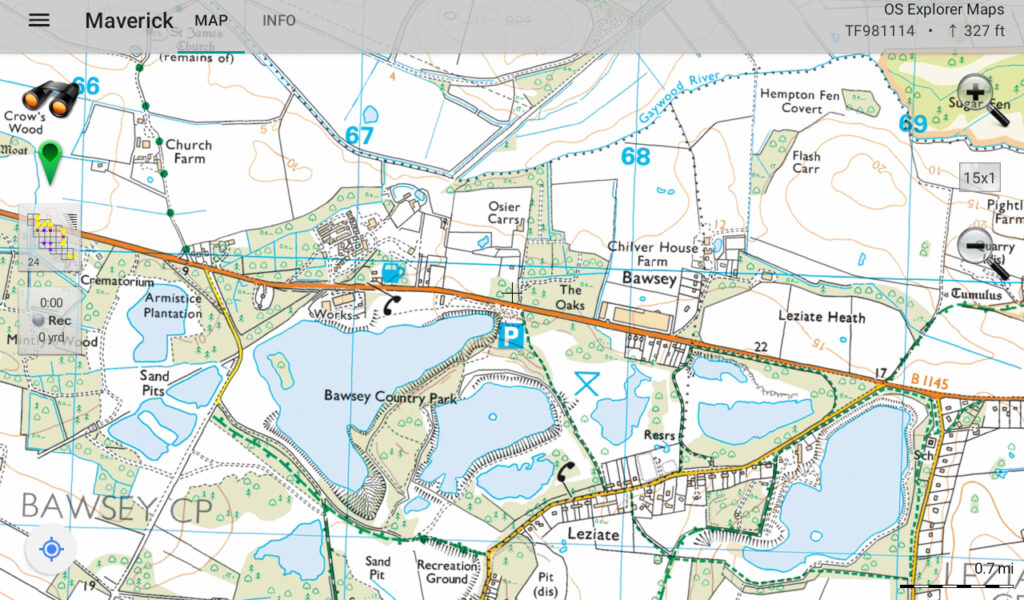
The owners of these two lakes make it clear that they do not wish people to swim, and that they consider it dangerous. They have park wardens on duty in the summer, who will talk to people and tell them that it is dangerous and that they should keep out of the water. https://www.bawseycountrypark.co.uk/park-safety; https://www.facebook.com/bawseypark/
I am not aware of any evidence that this location is particularly dangerous, or has any features that make it more dangerous than other previous sand quarries or gravel pits. The claimed ‘dangers’ are examined in this article on this website, along with the actual risks and how to stay safe. So – as with anywhere – any swimmer should always assess very carefully every single time they go for a swim.
Many locals have for many years believed that this place is particularly dangerous, and there are understandable sensitivities because people have died. There have been four deaths over the last eight years, which appear to have been from such causes as cold incapacitation, or falling off an inflatable into deep water unable to swim, rather than for reasons specific to these lakes. Any deaths, whether swimming or doing something else, are tragic and it is important to find ways to prevent them. Education and information about the real risks are likely to be a more effective way to help prevent such tragedies, and would work much better than a fruitless attempt to stop the unstoppable, as well as enabling the large local population to enjoy this healthy and generally safe activity (when done safely and with knowledge).
If more people swam regularly, particularly responsible and knowledgeable swimmers, then their presence would be established, the owners would have to recognise that people do swim and will swim, and would perhaps be persuaded that it would be better to embrace this and take some constructive action to improve safety knowledge amongst visitors. It could also persuade them to do a more thorough assessment and warn about unusual risks (as is a duty for landowners), say by using divers to see what is under the water and how near to the surface it is. Responsible swimmers can be of great help, in influencing others and helping to deal with issues. They follow the Outdoor Swimmers Code, which includes taking responsibility for their own safety.
We need more places to access for the popular, healthy, affordable, safe and enjoyable activity of outdoor swimming, and this part of Norfolk is poorly served with inland swim spots. The sea is less safe than swimming inland and often unsuitable due to tides or weather, while lakes have far fewer risks. More on access and legality on this website.
This location has many similarities with another ex-sand quarry in the Norfolk Brecks, where the landowner has a different attitude and thousands of swimmers use it happily every year.
Entering the water is not illegal, though it could perhaps be construed as trespass which is a civil offence. More detail on access and legality of swimming here, https://www.imogensriverswims.co.uk/blog/issues/access-guide/ and here, https://www.outdoorswimmingsociety.com/is-it-legal/.
All around the site are numerous signs and banners emphasising Keep Out of the water, No Swimming or paddling, no boats etc. In summer, many people paddle and swim despite this attitude and the wardens. It is not clear how much this is enforced either in summer or winter, or even how possible it might be to enforce it.
On a more practical and constructive note, the owners have installed some throw ropes with instructions and location info, and there was an RNLI banner about river safety in the car park (Oct 2021), which is a useful way to inform about potential risks in waterways (though more relevant to rivers than a lake, and without much advice about how to avoid these risks). They have also held water safety information days in summer 2021 and 2023 with local fire and rescue services and RNLI giving constructive information, particularly focusing on Float to Live and throwing ropes. Unfortunately media messaging around those days included inaccurate information such as that the lakes are cold, have freezing temperatures beneath the surface, and misunderstandings of cold water shock.
Useful and accurate information on water and swimming safety
https://www.outdoorswimmingsociety.com/understanding-flooded-quarries/
https://www.outdoorswimmingsociety.com/cold-incapacitation/
https://www.outdoorswimmingsociety.com/risks-cold-water/
https://www.outdoorswimmingsociety.com/category/features/survive/
https://www.imogensriverswims.co.uk/blog/issues/swim-safety/
https://www.imogensriverswims.co.uk/blog/issues/swim-play-in-water-safely-q-a/
Float to Live, from RNLI https://rnli.org/pages/ppc/beach-safety/beach-safe-float or Respect the Water https://respectthewater.com/campaign/float-to-live/
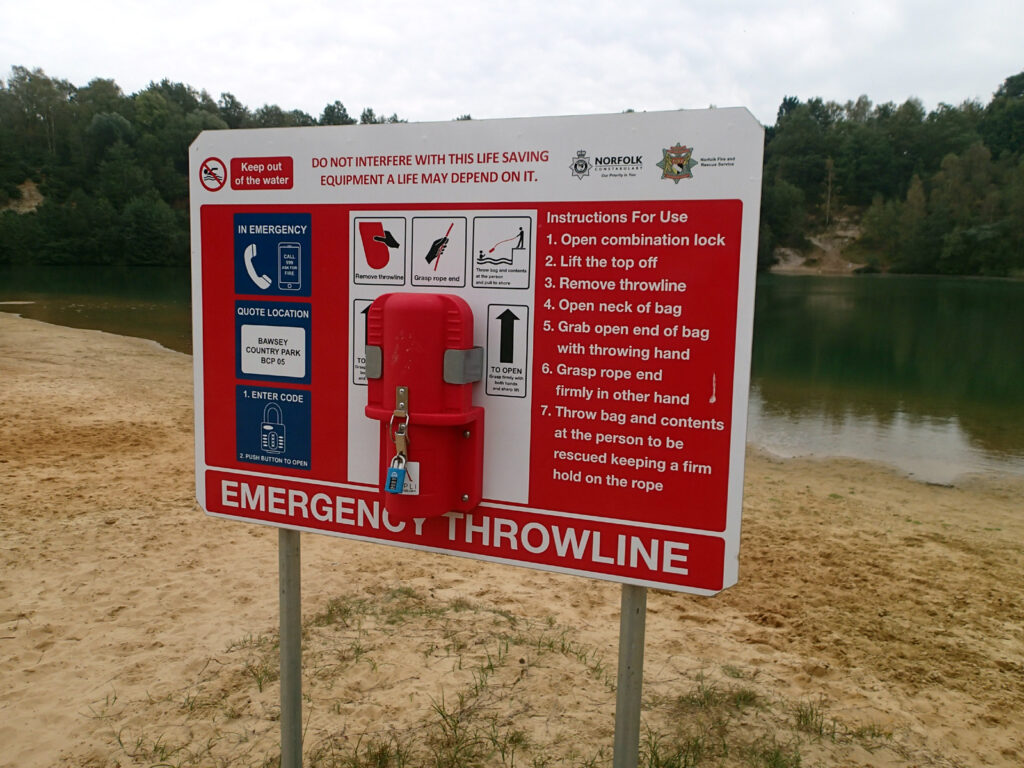
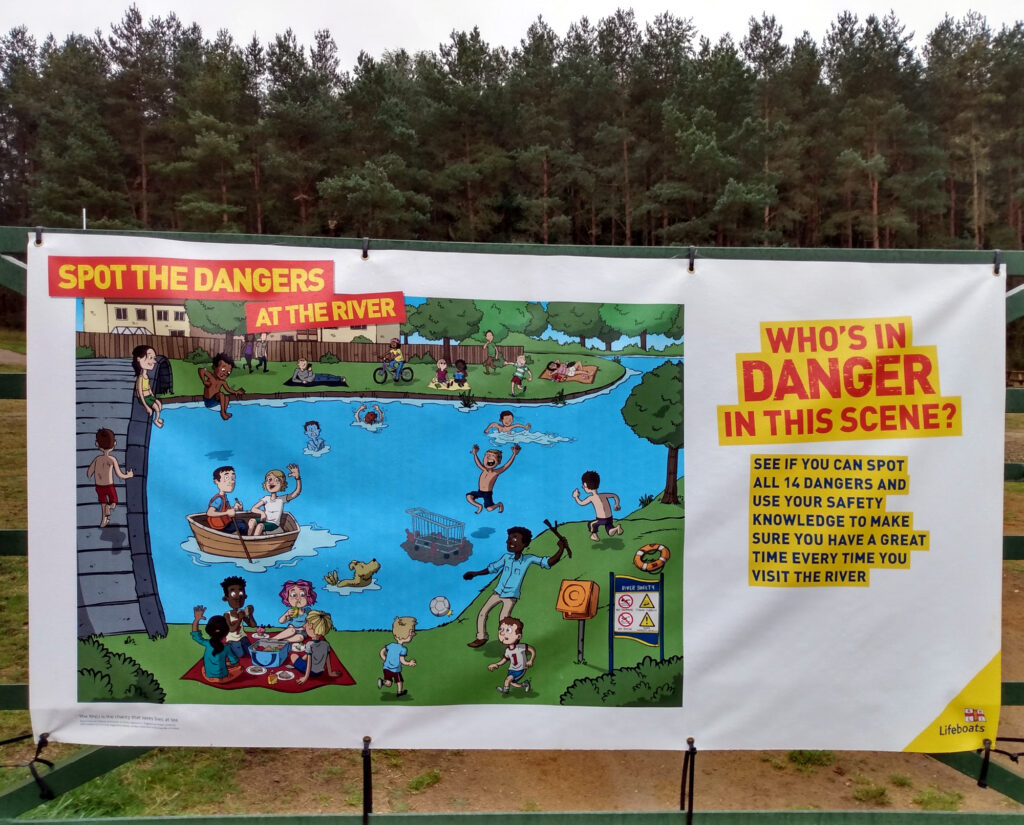
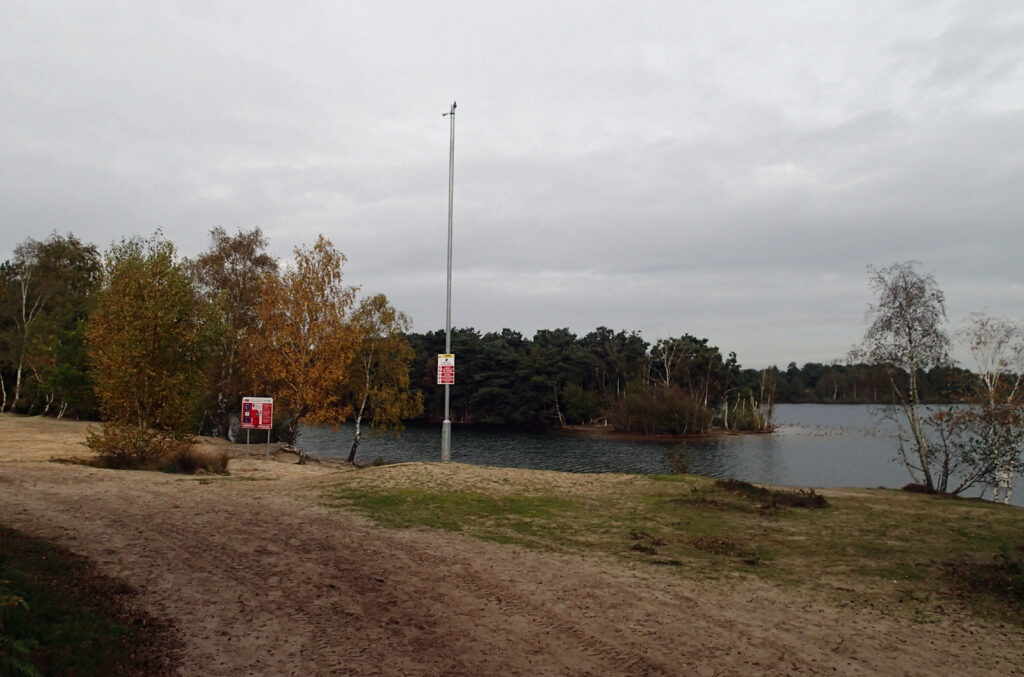
Please note: all swims and paddles are always at our own risk. Including a location on this website does not indicate that it is recommended or that it is safe; each must do their own risk assessment each time they swim or travel to a location. Please be aware that the level of risk can change over time, depending on a range of variables such as temperature, weather, time of day or night, personal fitness, and level of fatigue – and so each of these variables will need to be considered by an individual before making their own personal decision on whether to swim, where to swim, and for how long. There is Swim Safety info on this website, and on Outdoor Swimming Society website, Survive section. Please follow the Outdoor Swimmers Code. I accept no liability for the choices that people make. This website is not produced by an organisation, commercial or otherwise, and I am not assuming any legal responsibility for those who read the website, and to the maximum extent permissible by law I exclude all liability in the event of injury or other loss.

